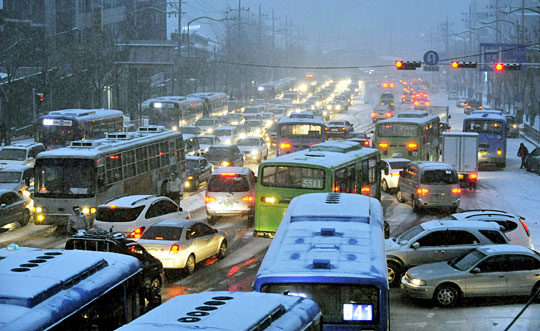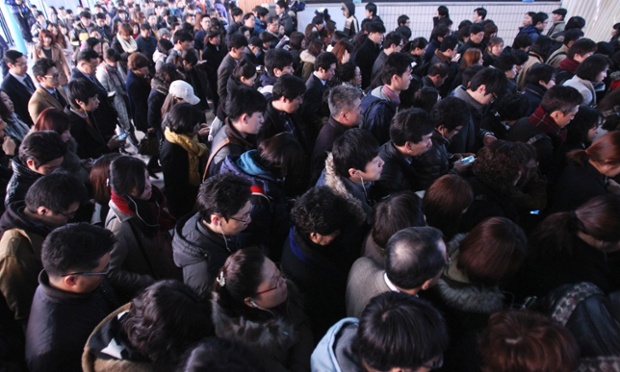After having been in Korea for some time now, some of the things in the Korean society really stand out compared to back home. The following contain different things related to the traffic in Seoul, that I could recall from the top of my head.
Traffic in Seoul:
Have you ever been to Paris? Seoul is just the same. The driving regulations are different, a lot different. To the untrained eye of a foreigner, this may seem like random chaotic movements integrated into each other and magically avoiding accidents. Of course this is just the normal regulations from the government regarding the traffic, but it is still baffling when being a person from one of the Nordic countries.
 |
| http://asiancorrespondent.com/22238/now-thats-what-i-call-seoul-traffic/ It seems like everyone here has agreed to drive in completely different ways from the ones known to foreigners, unless they are from France. |
Metro system:
Since driving may be a bit inconvenient due to the heavy amount of traffic, especially in the second biggest metropolitan area in the world (23+ million inhabitants), it is luckily also possible to move around Seoul in other ways. Another popular method of transportation is the Seoul metropolitan system (metro/in-city train - system).
It has 326 stations and is 406 km in total accumulated length. Compared to the Danish S-train and metro service which only has 84 stations and is 170 km in
 |
| Korean metropolitan system |
 |
| Copenhagen S-train and metro system |
 |
| From: theguardian.uk Avoid rush hour |
- As a pedestrian you get approximately 30 seconds to cross the road and then the second the pedestrian light changes to red, the cars will start moving. The waiting time is then 2 minutes and 30 seconds until it becomes green again.
- In the subway you will rarely see people not looking at a screen of some sort, or be on the phone. Even couples will a lot of times sit right next to each other without uttering a word, but look on their own respective phone.
- You do not simply take your bicycle and bike around on the roads of Seoul, which is why people often bike on the sidewalk. Scooters and motorcycles also drive on the sidewalk from time to time.
- Because of the waste collecting/recycling system they have in Korea, trash is simply put out on the streets in plastic bags to be picked up on certain days. This way can make the streets really smelly when people put out trash on days when it is not picked up.
- The smaller streets do in fact look like the "Korea/China towns" seen in movies










